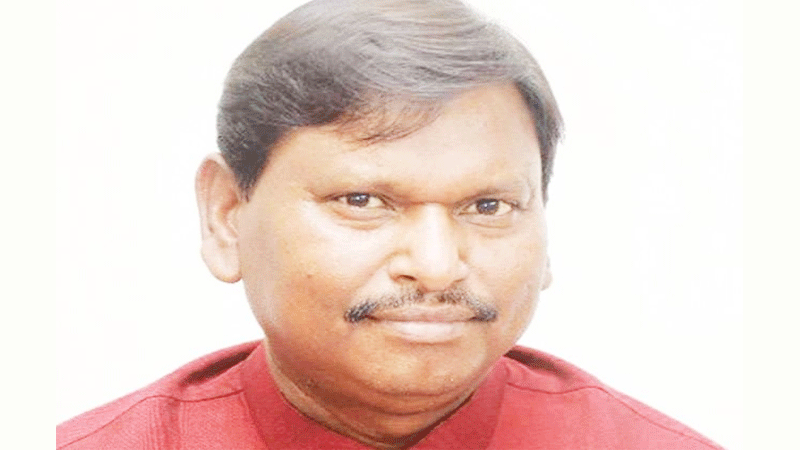The ‘Pradhan Mantri Adi Adarsh Gram Yojana’ has been launched by the Ministry of Tribal Affairs to achieve the goal of integrated social and economic development of the tribal people. So thatevery kind of facility can be made available to the villages with tribal populations and solid infrastructure can be provided to them
ARJUN MUNDA
Scheduled Tribes (STs) in India constitute about 8.6 percent of India’s population, numbering about 104 million. There are over 700 Scheduled Tribes notified under Article 342 of the Constitution of India. In line with Prime Minister Shri Narendra Modi’s vision of ‘Sabka Saath, Sabka Vikas, Sabka Vishwas and Sabka Prayas’, the Government of India has focused on the development of tribals and preservation of their heritage and culture as a priority. In line with this vision and its abiding commitment to the welfare of tribals, the Ministry of Tribal Affairs has geared itself for regional development through the enhanced allocation of financial resources, a convergence of efforts, and restructuring of the planning and implementation machinery of the Ministry.
Pradhan Mantri Adi Adarsh Gram Yojana (PMAAGY) :
The ‘Pradhan Mantri Adi Adarsh Gram Yojana’ has been launched by the Ministry of Tribal Affairs to achieve the goal of integrated social and economic development of
The objective of Pradhan Mantri Adi Adarsh Gram Yojana is to convert villages with specific tribal populations into Adarsh Grams
the tribal people. So that every kind of facility can be made available to the villages with tribal populations and solid infrastructure can be provided to them. The objective of Pradhan Mantri Adi Adarsh Gram Yojana is to convert villages with specific tribal populations into Adarsh Grams.
Ministry of Tribal Affairs has revived the earlier scheme of ‘Special Central Assistance to Tribal Sub-Scheme (SCA to TSS) with the name ‘Pradhan Mantri Adi Adarsh Gram Yojana (PMAAGY)’ for implementation during 2021-22 to 2025-26, which aims at the integrated development of villages with significant tribal population, covering a population of about 4.22 crores (about 40 per cent of the total tribal population).
The objective of this scheme is to achieve integrated socioeconomic development of selected villages through the convergence approach. It involves the preparation of village development plans based on needs, potential and aspirations. Apart from this, it also includes maximizing the coverage of individual/family benefit schemes of the Central / State Governments and improving the infrastructure of critical sectors such as health, education, connectivity, and livelihood.
Majorly in 8 areas of development under this scheme:
It is envisaged to bridge the existing developmental gaps. These areas are-
1. Road connectivity (Internal and inter-village/block)
2. Telecom connectivity (mobile/ internet)
3. School
4. Anganwadi Centre
5. Health Sub-Centre
6. Drinking water facility
7. Drainage and
8. Solid Waste Management.
A provision of Rs 20.38 lakhs per village has been made as a ‘gap feeling’ measure for approved activities, including administrative expenses under PMAAGY. Further, States/UTs are encouraged to pool resources in the form of Central and State Scheduled Tribe Component Fund (STC) funds and other financial resources available with them for saturation of infrastructure and services in the identified villages under PMAAGY goes.
Salient Features of PMAAGY:
• It is envisaged to benefit 36,428 villages from 2021-22 to 2025-26.
• The main objective of this scheme is to achieve integrated socio-economic development of tribal-dominated villages.
• Under PMAAGY, an amount of Rs 20.38 lakhs will be provided to each village for the approved works, including administrative expenses.
• A target has been set to develop 7,500 villages every year.
• An amount of Rs 1,927 crores has already been released to the states for 16,554 villages in 25 states.
• Gram Vikas Yojana, with respect to 6264 villages has been approved for implementation.
The scope of the existing scheme of “Special Central Assistance to Tribal Sub-Plan” has been expanded to include 36,428 villages under ‘Pradhan Mantri Adi Adarsh Gram Yojana’ to develop them as Adarsh Grams in coordination with the concerned Ministries. These villages will be developed comprehensively as the tribal population in these villages is more than 500 and up to 50% of the total population.
The cabinet has approved an amount of Rs 7276 crores for the next five years. A total amount of Rs 2130.47 crores has been allocated under the scheme during 20121-22 and 2022-23 with Rs 785 crores and Rs 1345.47 crores respectively. Further, it is envisaged that the concerned Ministries will play their part in various areas of development in these villages out of STC funds of about Rs 79177.74 crores as per their planned norms.
(The writer is Union Minister of Tribal Affairs, Government of India)


